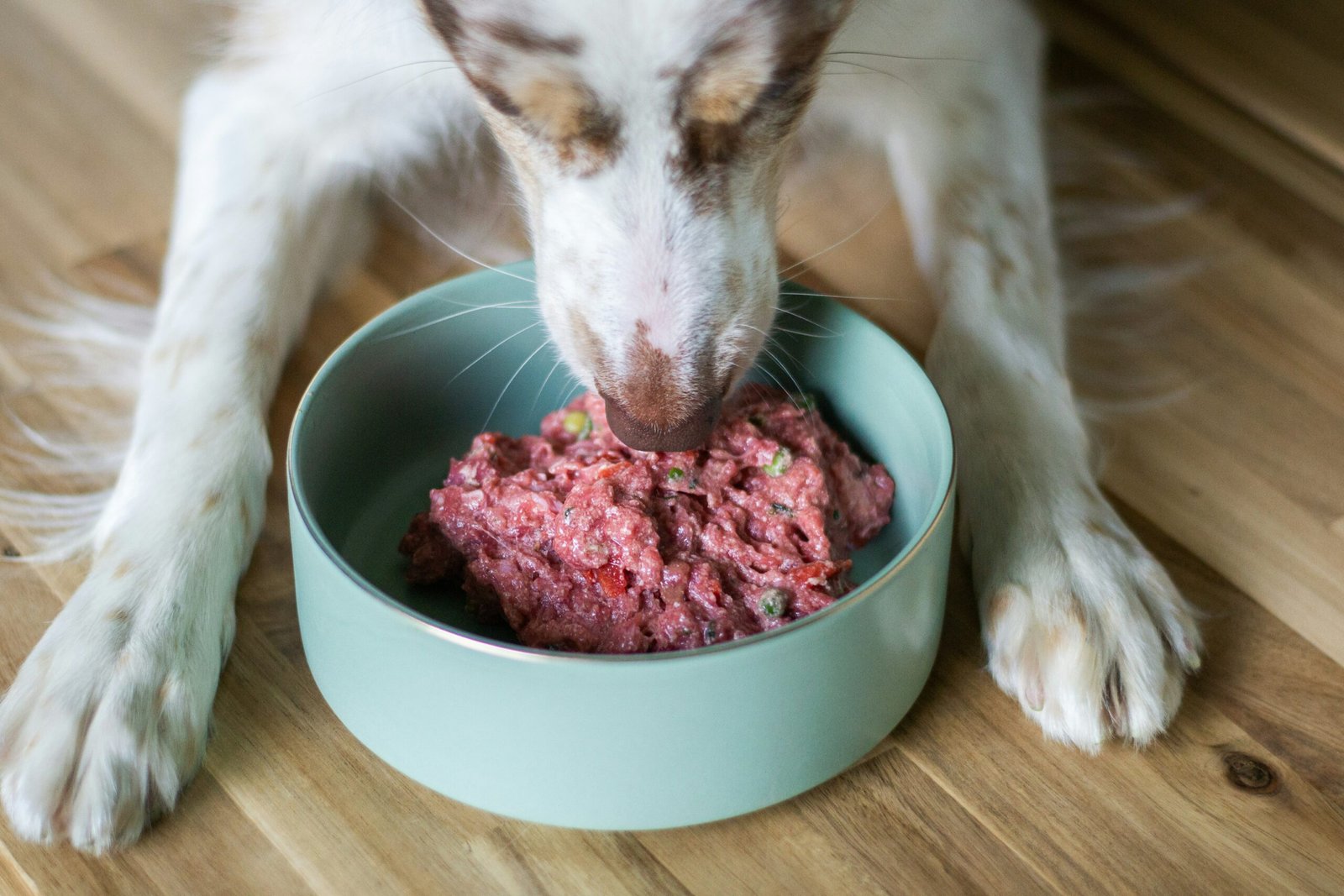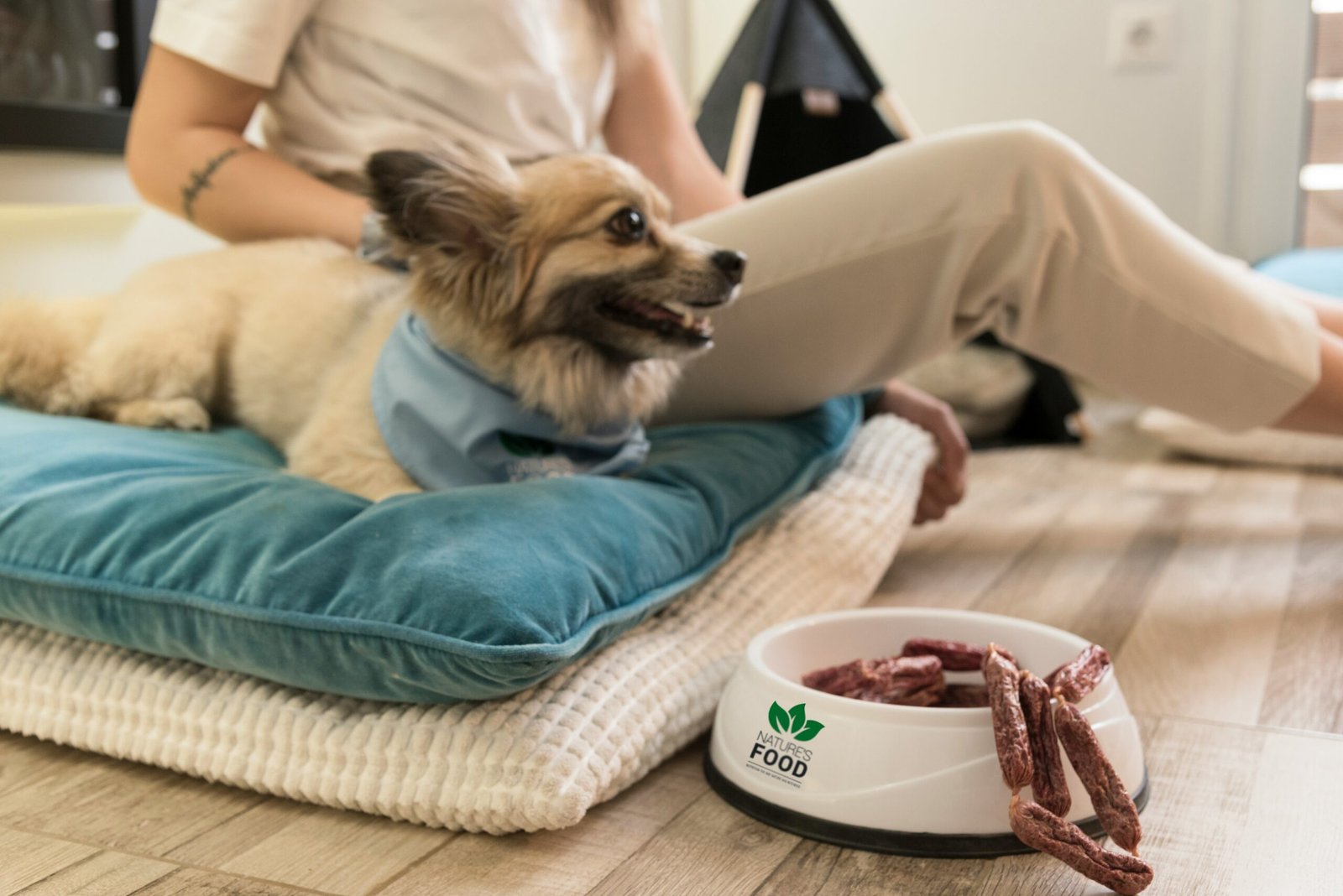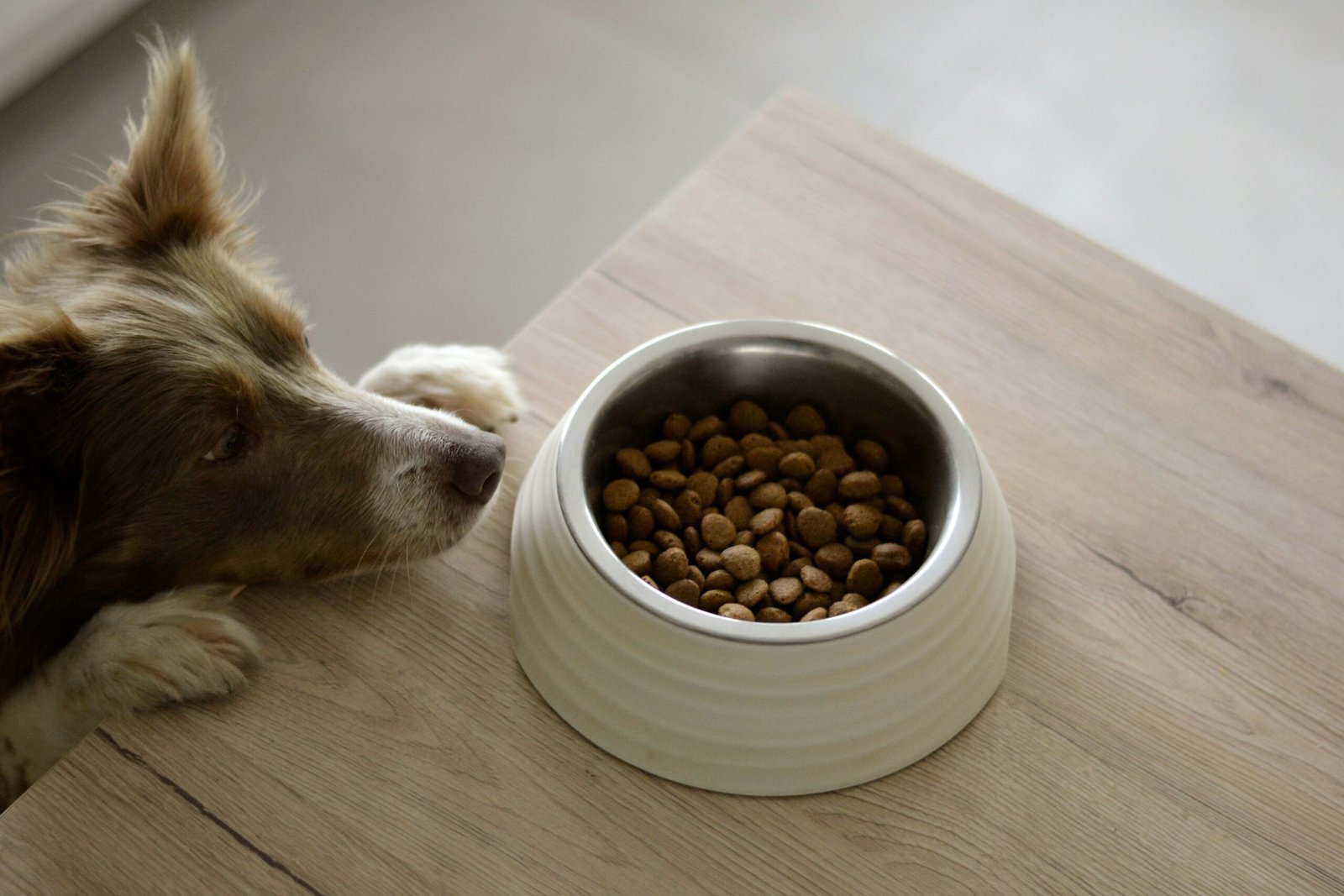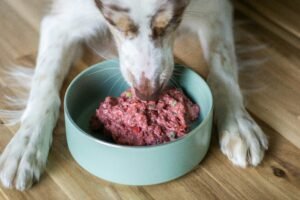Introduction
If you’ve ever wondered how to mix wet and dry dog food without upsetting your pup’s stomach, you’re not alone. Many pet owners want the convenience and cost-effectiveness of kibble, but also the flavor, moisture, and extra nutrition that wet food provides. The good news? When done correctly, combining both can create a balanced, tasty, and vet-approved diet for your dog.
In this guide, we’ll explore the benefits and risks of mixed feeding, step-by-step instructions for safely transitioning your dog, and vet-recommended combos that keep tails wagging. By the end, you’ll know exactly how to portion, serve, and choose the right food so your dog gets the best of both worlds.
This post may contain affiliate links. If you buy through these links, I may earn a small commission at no extra cost to you. As an Amazon Associate, I earn from qualifying purchases.
Table of Contents
Why Pet Owners Mix Wet & Dry Dog Food
For many dog owners, feeding time isn’t just about filling a bowl — it’s about making sure their pup eats happily while getting the nutrition they need. That’s why more and more people are mixing wet and dry dog food. It combines the best of both worlds: the convenience of kibble and the palatability of wet food.
Here are the main reasons pet parents choose this feeding method:
- Better Taste & Texture – Some dogs turn their noses up at plain kibble. Adding wet food makes meals more appealing, especially for picky eaters.
- Improved Hydration – Wet food contains up to 80% water, which can help dogs that don’t drink enough stay hydrated. This is particularly important for senior dogs.
- Balanced Nutrition – Kibble often delivers complete nutrition and dental benefits, while wet food provides protein variety and easier digestion. Mixing both can support a more well-rounded diet.
- Cost-Effective Feeding – Feeding only wet food can get expensive. Mixing allows owners to stretch the benefits of wet food without breaking the bank.
- Supports Different Life Stages – Puppies, seniors, and dogs with dental issues often benefit from softer food textures combined with kibble for crunch.
Pro Tip: If your dog is hesitant about eating or has become a picky senior, combining wet and dry dog food can be an easy way to encourage healthy eating habits. If you want to learn more on why hydration in dog food is key for senior dogs, than read our other article HERE.
Nutritional Benefits & Risks of Mixing Wet and Dry Dog Food
Mixing wet and dry dog food can be a smart way to give your pup variety and balance — but only if it’s done correctly. Understanding both the benefits of mixing dog food and the possible risks ensures you’re making the healthiest choice for your pet.
Benefits of Mixing Wet and Dry Food
- Enhanced Flavor & Appetite – Wet food boosts aroma and taste, making mealtime more exciting for picky eaters or senior dogs.
- Improved Digestion – Many wet foods are higher in protein and lower in carbohydrates, which can support better nutrient absorption.
- Controlled Calories – Mixing allows you to portion each type of food strategically, supporting weight management goals.
- More Balanced Nutrition – Dry kibble delivers vitamins, minerals, and dental benefits, while wet food provides hydration and softer textures. Together, they can support overall wellness.
Risks of Mixing Wet and Dry Food
- Overfeeding – Combining both without adjusting portion sizes can lead to excess calories and weight gain.
- Digestive Sensitivity – Some dogs may experience stomach upset when switching too quickly or eating rich, high-fat wet foods.
- Inconsistent Nutrition – If the mix isn’t portioned properly, your dog may not get the right balance of nutrients.
- Cost & Storage – Wet food requires refrigeration once opened and can increase overall feeding costs.
Vet Advice: The key to safe feeding is balance. Always measure portions and transition gradually when combining wet and dry dog food, especially for dogs with sensitive stomachs.
Read more about the best wet dog food HERE.

How to Combine Wet & Dry Dog Food Safely (step by step)
Knowing how to mix wet and dry dog food correctly is essential for your dog’s digestion, weight management, and overall health. When done right, it can turn mealtime into a more enjoyable, nutritious experience. Here’s a step-by-step, vet-approved approach:
Step 1: Introduce Wet Food Gradually
Start by mixing a small amount of wet food into your dog’s regular kibble. Sudden changes can upset your dog’s stomach. Begin with a ratio of 25% wet food to 75% dry food for the first 3–4 days, then gradually increase the wet portion until you reach your target mix.
Step 2: Measure Portions Carefully
Overfeeding is a common mistake. Always measure your dog’s kibble and wet food separately. For example:
- Small dogs (10–20 lbs): ¼ cup dry + 2–3 tbsp wet
- Medium dogs (20–50 lbs): 1 cup dry + ½ can wet
- Large dogs (50+ lbs): 2 cups dry + 1 can wet
Keep in mind that wet food often contains more calories than it looks, so adjust the kibble portion to maintain proper calorie intake.
Step 3: Monitor Digestive Health
During the transition, watch for loose stool, gas, or vomiting. These can indicate your dog needs a slower adjustment or a different wet food formula. Keep a diary for the first two weeks to track changes in appetite, energy, and stool consistency.
Step 4: Maintain Consistency
Feed at the same times every day, and stick with one wet/dry food combo at a time. Dogs thrive on routine, and sudden changes in protein source or brand can lead to stomach upset or food aversion.
Step 5: Adjust for Life Stage and Special Needs
- Puppies: Require higher protein and fat ratios, so use puppy-specific kibble and wet food.
- Senior Dogs: Softer wet food can help aging teeth and improve palatability, while dry kibble provides essential vitamins and minerals.
- Overweight Dogs: Carefully measure portions and consider lower-calorie wet foods to prevent excess weight gain.
Step 6: Add Supplements Wisely
If your dog needs extra support — like joint health, digestive enzymes, or calming supplements — add them gradually into the mix. Examples include CBD oils from King Kanine or Nuleaf Naturals, or Innovet Pets mobility chews. Introduce one supplement at a time and monitor your dog for tolerance and effectiveness.
Vet Tip: Always consult your veterinarian before making major dietary changes, especially for dogs with chronic conditions, allergies, or digestive sensitivities. A professional can provide portion guidance, recommend compatible brands, and ensure your dog’s diet remains complete and balanced.
Vet-Approved Tips for Mixed Feeding
Veterinarians often encourage pet parents to try mixing wet and dry dog food — but only when done with consistency and balance. Here are some expert-backed tips to keep in mind:
✅ Do’s
- Stick to One Brand or Protein Source at a Time
Dogs with sensitive stomachs often struggle when different protein sources or formulas are combined. For example, mixing chicken-based kibble with beef-based wet food can lead to stomach upset. Choose one protein and stick with it for at least a few weeks before changing. - Measure Portions Carefully
Overfeeding is the biggest risk of mixed feeding. Always use a measuring cup for dry kibble and a tablespoon or kitchen scale for wet food. This ensures your dog gets the right calories without accidental weight gain. - Feed at the Same Times Daily
Dogs thrive on predictability. Feeding at the same times each day supports digestion, reduces begging behavior, and helps regulate bathroom breaks. Whether you do two or three meals a day, consistency is key. - Choose Quality Formulas
Look for foods labeled “complete and balanced” by AAFCO. This guarantees that each portion of wet or dry food contributes to a full nutritional profile. High-quality formulas often contain glucosamine, omega-3 fatty acids, or probiotics that support long-term health.
❌ Don’ts
- Don’t Free-Feed Wet Food
Wet food spoils quickly once exposed to air. Leaving it out all day can attract bacteria and reduce palatability. Always serve in controlled portions and refrigerate unused food promptly. - Don’t Rush the Transition
Introducing too much wet food too quickly can cause gas, diarrhea, or vomiting. Transition gradually over 7–10 days, starting with a 25% wet and 75% dry mix, and slowly increasing the ratio as your dog adjusts. - Don’t Forget Dental Health
Kibble’s crunch helps scrape plaque from teeth, but wet food doesn’t provide the same benefit. If you increase wet food in your dog’s diet, balance it with dental chews, brushing, or professional cleanings to maintain oral health.
Vet’s Note: For dogs with arthritis, obesity, or special dietary needs, your veterinarian may recommend specific dog food portion guides or adding supplements (like omega-3s or joint chews) directly into meals for better overall health.
Best Wet & Dry Dog Food Combos (2025 Picks)
| Combo Purpose | Dry Food | Wet Food / Topper | Notes / Benefits | Shop |
|---|---|---|---|---|
| All-Around Nutrition | Hill’s Science Diet Adult Dry Food | Hill’s Science Diet Canned Food | Balanced, vet-trusted formula for general health | Amazon |
| Sensitive Stomachs | Purina Pro Plan Sensitive Skin & Stomach | Purina Pro Plan Wet Formula | Gentle digestion, great for sensitive dogs | Amazon |
| Senior Dogs | Blue Buffalo Life Protection Senior Kibble | Blue Buffalo Homestyle Senior Wet Food | Soft texture for aging teeth, joint support | Amazon |
| Joint & Mobility Support | Premium Senior Kibble | Innovet Pets Advanced Mobility Chews | Glucosamine, MSM, CBD for joint health | Innovet Pets |
| Calming & Anti-Inflammation | Royal Canin Calm Formula or similar kibble | King Kanine King Kalm CBD Oil + Krill Oil | Reduces inflammation and supports calmness | King Kanine |
| Natural Wellness | Grain-Free Premium Kibble (Wellness CORE / Orijen) | Nuleaf Naturals CBD Pet Oil | Natural anti-inflammatory support | Nuleaf Naturals |
| Daily CBD Support | Any Balanced Kibble | Bailey’s CBD Dog Chews | Combines nutrition with calming & joint support | Bailey’s CBD |
Pro Tip: Always use a complete and balanced kibble as the base. Top it with wet food or supplements for flavor, hydration, and specific health support.

FAQs About Mixing Wet & Dry Dog Food
1. Is it safe to mix wet and dry dog food?
Yes, as long as you maintain proper portions, transition gradually, and use a complete and balanced kibble as the base.
2. How much wet vs dry food should I feed?
It depends on your dog’s size, age, and activity level. A small dog may need ¼ cup kibble + 2–3 tbsp wet, while a large dog may require 2 cups kibble + 1 can wet. Always check brand feeding guidelines.
3. Can I add supplements or toppers to the mix?
Yes — options like CBD oils, joint chews, or mobility toppers can be added for specific health benefits. Introduce them slowly and consult your vet if your dog has chronic conditions.
4. Do senior dogs benefit more from wet food?
Senior dogs often benefit from softer textures, higher moisture, and easier-to-digest nutrients. Mixing wet and dry food helps with dental health and joint support.
5. Can mixed feeding cause digestive issues?
Digestive upset can occur if the transition is too fast or portioning is inconsistent. Start slow, monitor your dog’s stools and energy, and adjust ratios as needed.
Final Thoughts
Mixing wet and dry dog food can transform mealtime into a nutritious, enjoyable, and vet-approved routine. Done correctly, it combines flavor, hydration, and balanced nutrition, supporting your dog’s overall health and well-being.
Whether you choose a simple combo like Hill’s Science Diet wet + dry for all-around nutrition, or a supplemented mix with Innovet Pets, King Kanine, or Nuleaf Naturals for joint and calming support, the key is balance, consistency, and portion control.
Don’t wait to make mealtime healthier and more enjoyable for your dog. Try one of these top vet-approved wet and dry combos today and see how your pup thrives! Explore options on Amazon, Innovet Pets, King Kanine, Nuleaf Naturals, or Bailey’s CBD.
Sources
- American Kennel Club (AKC) – Dog Nutrition & Feeding Guides: https://www.akc.org/expert-advice/nutrition/
- PetMD – Feeding Your Dog: Wet vs Dry Food: https://www.petmd.com/dog/nutrition/how-mix-wet-and-dry-dog-food
- VCA Hospitals – Dog Feeding Tips & Safe Diet Transition: https://vcahospitals.com/know-your-pet/dog-nutrition
- The Spruce Pets – Dog Feeding Advice & Diet Mixing: https://www.thesprucepets.com/dry-vs-wet-dog-food-4845440
- Association of American Feed Control Officials (AAFCO) – Complete & Balanced Dog Food Standards: https://www.aafco.org/
- Veterinary Partner – Safe Feeding Practices & Transitioning Foods: https://veterinarypartner.vin.com/default.aspx?pid=19239&id=4951479




Pingback: Best Wet Food For Senior Dogs in 2025 - seniordog-care